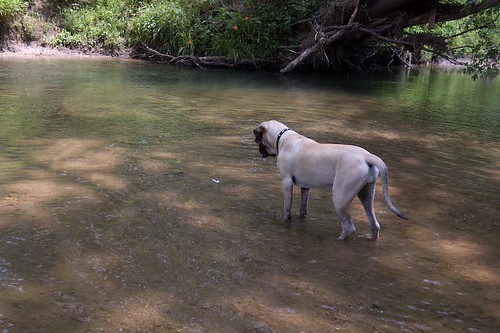
Image : http://www.flickr.com
The first and most important, what causes a dog to be aggressive towards other dogs?
Most dogs have a natural instinct, territorial, some more than others, and it is important that the passage of time to research the characteristics of the breed you are considering buying before making a commitment.
Furthermore, fear is a kind of aggression. This is called "fear motivated aggression." Some breeds tend to be more aggressivethan others, no matter how it was collected, other types of aggression, dominance, territorial, possessive, protective and redirected aggression.
A study by the University of Pennsylvania and 6,000 dog owners found that the number of aggressive breed of dog breeds of the 33 respondents were of a dachshund, that's right for the Viennese. The study revealed that one in five dachshunds have bitten or tried to bite strangers, and have a similar numberattacked other dogs, an owner has 12 in her snapped.
A nervous dog nervous or very often feel intimidated and react aggressively. German shepherds are often very nervous and racial attacks on children, if they bother barking, or nearby.
Other breeds with suspected provisions are:
Llasa Apso: can be cranky with kids
Toy poodles: bite out of self-defense
Rhodesian Ridgebackvery dominant race
Miniature Pinscher: "Big Dog" mindset in little body
Beijing: intolerant
Chihuahuas: prefer adults, not tolerant of children
Chow Chow: one-person dogs, bite without warning
Giant Schnauzers: very dominant breed is also challenging adults
Old English Sheep Dog: very protective of owner
Cocker Spaniel: very protectiveowner
Rottweilers: very protective
So, what we do, dogs to prevent aggression directed toward other people. Obedience training is the first step and the most obvious. adequately trained in dog commands to respond as the beginning of its owner.
Once the dog recognizes your authority and accept the fact that you are master, is more manageable. Socialization is the next step. You should gradually introduce the dog to otherDogs that have used less aggressive around them and tend to react.
to eliminate the aggressive behavior dog training should always be done with understanding and patience. They never rush your dog and, above all, do not punish him. Instead, they use positive reinforcement and praise and reward, if it behaves correctly. All dogs love to please their owners and respond to praise and treats. Without exception, I have always found the simplePhilosophy of praise and reward the dog for the most effective way to form a.
Always remain calm. Too often I see owners who embarrassed by their dog on a lead to aggressive behavior, or are afraid that their dog is injured dog and often over-react or under react. When you are tense, your dog feels it is now more increase aggressive behavior.
Be especially alert to theThe body language and do everything possible to keep the cold-blooded. Focusing on the work of the dog not on what others think of your dog.
Always be aware of your surroundings. It is usually much better away from announcing a dog approaches and work with your dog as a dog is there to wait for the dog you are and then try to calm her down.
That said, reinforce the behavior. I often see the owners nervouspat their dogs and stop to say something like, "okay" in a singsong. All this does is teach your dog that you approve of the behavior. Finally, it is only moderately responsive, and you're knocking him for that!
Try to give your dog to do something. Not only to fall back on a sit-stay, but work with the dog in a sort of a sequence. Keep busy with something else to keep your brain busy.
Preventing problems through the warning signs in advanceof time. For added control, I always recommend a Halti collar, fits over the dog's neck and attached to the face. The line is a ring under the dog's throat a. What does it achieve? It allows a dog that might otherwise take to correct itself, no cracks, crack, or pinching. It 'made of nylon, is very durable and is available in six sizes and must be installed by the dog.
Invented by Dr. Roger Mugford works on the principle that no animal likes to go with his head turned to the right or left. As a dog begins to accelerate, reaching the full extent of a short leash or long, gently turn the Halti collar of the dog's head. The dog learns very quickly, do not get along. If he does not remember, the wrist with light pressure will remind the dog to stop or slow down.
Here are some tips for handling a dog on a leash that is aggressive towards otherDogs. If you notice, still does not solve the problem alone, it would probably be better to find a coach to address the issue of contact.






0 comments:
Post a Comment